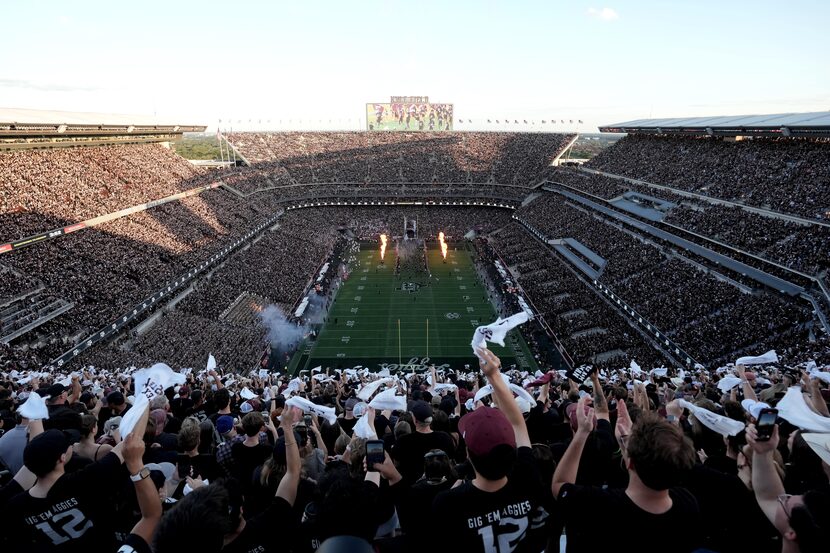Top Stories
Urgent: College Sports Face Financial Crisis Amid Private Equity Rush

UPDATE: College athletics are in crisis mode as financial pressures mount, following the House v. NCAA settlement effective June 2023. This landmark ruling allows universities to pay student-athletes directly, triggering a desperate need for funding across many athletic departments.
Schools now face a potential annual cap of $20 million to cover athlete compensation, according to CBS Sports. While the total revenue from college athletics soared to $13.6 billion in 2022, a significant gap exists between revenue generation and cash flow, placing substantial strain on various institutions.
The NCAA President, Charlie Baker, issued a stark warning on October 20, 2023, during a Big East roundtable, stressing the risks associated with private equity investments in college sports. He advised stakeholders to “be really careful” as private equity firms eye lucrative opportunities in this sector.
The pressure to secure immediate funding is palpable, with private equity groups reportedly circling college sports, eager to offer cash infusions. A potentially game-changing proposed deal with the Big Ten Conference could involve a staggering $2 billion, raising concerns about the future sustainability of smaller schools struggling to meet rising costs.
Despite the turmoil, some institutions, particularly in Texas, are resisting the allure of private equity. Earlier this year, Texas A&M secured a $515 million multimedia rights deal with Playfly Sports, which includes provisions for Name, Image, and Likeness (NIL) opportunities. Both Texas A&M and the University of Texas at Austin boast robust funding, but the competition for resources is fierce, especially with the growing number of formidable opponents within the SEC.
The appeal of rapid capital from private equity is undeniable; however, experts warn that such funds come at a high cost. The pressure to generate annual returns could force schools to make painful sacrifices, including raising ticket prices or cutting budgets for less profitable sports programs.
Historically, universities have relied on low-interest bank loans for projects rather than private investments. The ongoing shift towards direct athlete payments has forced schools to contemplate unconventional funding strategies, including private capital for stadium upgrades and event financing.
Innovative solutions like fractional ownership, inspired by the successful model of the Green Bay Packers, are emerging as a viable alternative. This model allows universities to issue regulated financial products directly to fans and alumni, creating a new avenue for investment without ceding control to outside firms.
As the landscape of college athletics evolves, the urgency for sustainable financial strategies has never been greater. With stakeholders facing tough decisions about funding and program viability, the future of college sports hangs in the balance. Immediate attention to these pressing issues is crucial for the survival and integrity of athletic programs nationwide.
Stay tuned for more updates as universities navigate this complex financial terrain and seek innovative solutions to support their athletic departments.
-

 Business2 weeks ago
Business2 weeks agoIconic Sand Dollar Social Club Listed for $3 Million in Folly Beach
-

 Politics2 weeks ago
Politics2 weeks agoAfghan Refugee Detained by ICE After Asylum Hearing in New York
-

 Health2 weeks ago
Health2 weeks agoPeptilogics Secures $78 Million to Combat Prosthetic Joint Infections
-

 Science2 weeks ago
Science2 weeks agoResearchers Achieve Fastest Genome Sequencing in Under Four Hours
-

 Lifestyle2 weeks ago
Lifestyle2 weeks agoJump for Good: San Clemente Pier Fundraiser Allows Legal Leaps
-

 Health2 weeks ago
Health2 weeks agoResearcher Uncovers Zika Virus Pathway to Placenta Using Nanotubes
-

 World2 weeks ago
World2 weeks agoUS Passport Ranks Drop Out of Top 10 for First Time Ever
-

 Business2 weeks ago
Business2 weeks agoSan Jose High-Rise Faces Foreclosure Over $182.5 Million Loan
-

 Science2 weeks ago
Science2 weeks agoMars Observed: Detailed Imaging Reveals Dust Avalanche Dynamics
-

 Entertainment2 weeks ago
Entertainment2 weeks agoJennifer Lopez Addresses A-Rod Split in Candid Interview
-

 World2 weeks ago
World2 weeks agoRegional Pilots’ Salaries Surge to Six Figures in 2025
-

 World2 weeks ago
World2 weeks agoObama Foundation Highlights Challenges in Hungary and Poland









